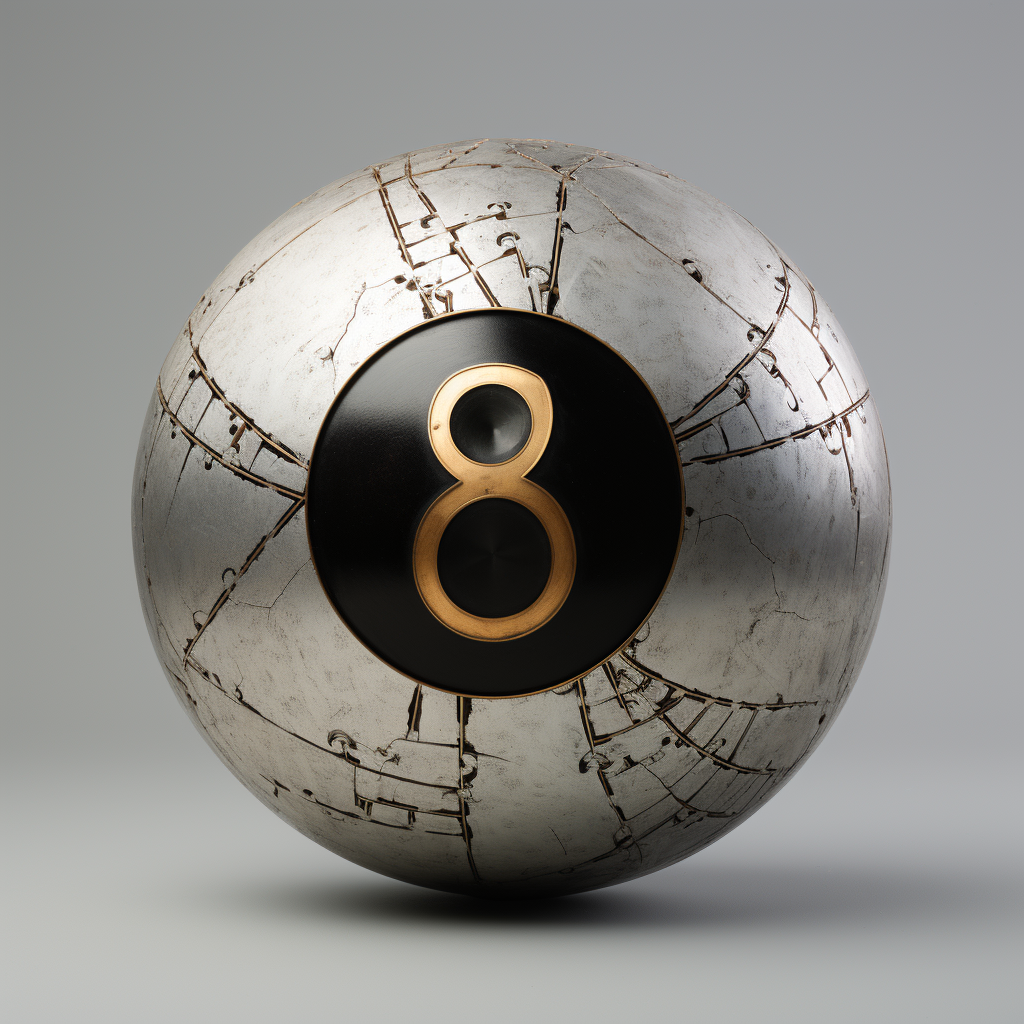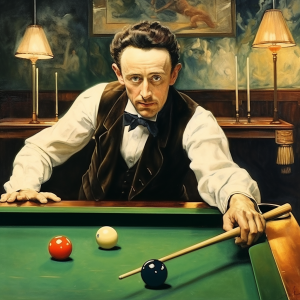Learn to Master the Draw Shot (Backspin)
The draw shot, often referred to as the backspin shot, is a fundamental technique in pool that allows players to control the cue ball’s movement post-collision, making it retreat towards them.
Why the Draw Shot is Crucial
This shot provides players with a strategic advantage, enabling them to:
- Position the cue ball for the next play.
- Navigate through tight spaces or avoid potential snookers.
- Create angles that wouldn’t be possible with a straightforward hit.
Technique and Execution
To achieve the perfect draw shot:
- Aim for the bottom center of the cue ball.
- Maintain a level cue during the stroke.
- Ensure a smooth, fluid follow-through.
Strategic Implications
By mastering the draw shot, players can:
- Dictate the game’s flow.
- Set themselves up for combination shots or caroms.
- Play defensively, pulling the cue ball away from the pack.
The draw shot, while challenging to master, offers a plethora of strategic advantages. Its mastery is a testament to a player’s skill and control over the game.


The Draw Shot in Pool and Billiards: A Deep Dive

In the intricate world of pool and billiards, the draw shot, often referred to as the “backspin shot,” stands out as one of the fundamental shots every proficient player should master. By striking the cue ball below its center, players can make it spin backward after contact with the object ball, a technique that provides strategic depth and control over the game’s flow.
Why is the Draw Shot Essential?
At first glance, the draw shot might seem like just another way to hit the cue ball. However, its importance extends far beyond its visual appeal:
- Positional Play: The draw shot allows players to retreat the cue ball to a desired position, setting up for the next shot.
- Avoiding Obstacles: By controlling the cue ball’s post-contact movement, players can prevent it from colliding with other balls or pocketing unintentionally.
- Creating Angles: The draw shot can help players achieve specific angles for subsequent shots, especially in tight situations.
The Mechanics Behind the Draw Shot
Understanding the draw shot requires a deep dive into its mechanics:
- Point of Contact: The cue ball should be struck below its center, usually about a half to a full tip’s width, depending on the desired backspin.
- Stroke and Follow-through: A smooth, fluid, and straight follow-through ensures the backspin’s consistency. The cue’s speed at the moment of impact determines the amount of draw imparted.
- Equipment: A well-chalked cue tip provides the necessary friction to achieve the desired spin. Additionally, the quality and type of cue ball and cloth can influence the shot’s effectiveness.
Strategic Deployment of the Draw Shot
While mastering the draw shot’s technique is essential, knowing when and how to deploy it strategically can elevate a player’s game:
- Planning Sequences: By drawing the cue ball, players can set themselves up for a series of shots, potentially clearing the table in games like 8-ball or 9-ball.
- Safety Play: In situations where running the table seems improbable, a draw shot can be used to play safe, positioning the cue ball in a spot that challenges the opponent.
- Breaking Clusters: If a group of balls is clustered together, a well-placed draw shot can break them apart, creating opportunities.
Common Challenges and Misconceptions
- It’s All About Power: Many beginners believe a forceful hit is required for a successful draw shot. However, the precision of the strike, not power, is the key.
- Every Draw is the Same: The amount of draw can be varied by adjusting the cue’s speed and the contact point on the cue ball.
- Natural Roll: If the cue ball is not struck low enough, it might have a natural roll by the time it contacts the object ball, negating the draw effect.
The draw shot, while complex, offers players a world of strategic possibilities. Its mastery not only requires technical skill but also an understanding of the game’s nuances. When used judiciously, the draw shot can be a game-changer, underlining the player’s prowess and vision.

Perfecting the Draw Shot: Practice Techniques
The Importance of Practice
The draw shot, with its blend of technique and strategy, requires consistent practice to master. Honing this shot can drastically improve a player’s arsenal, providing them with more control and options during a game.
Basic Draw Practice
- Straight Shot Draw: Set up a straight shot to a pocket. Focus solely on drawing the cue ball back to its original position after potting the object ball. This drill reinforces the fundamental technique.
- Varying Distances: Position the cue ball at different distances from the object ball. Aim to draw the cue ball back to its starting point. This drill helps players adjust their stroke for varying shot lengths.
Advanced Draw Drills
- Positional Play: Place target markers on the table. After potting the object ball with a draw shot, aim to position the cue ball on these markers.
- Obstacle Navigation: Set up obstacles on the table, such as other balls or barriers. Use the draw shot to navigate around these obstacles, focusing on precision and control.
Consistency Through Repetition
Like any skill, consistency is achieved through repetition. Players should:
- Maintain a Stable Stance: Ensure a consistent and balanced stance for every shot.
- Focus on Follow-through: Concentrate on a smooth and straight follow-through to impart consistent backspin.
- Adjust for Table Conditions: Different tables and cloths can affect the draw shot. Adjusting the shot based on these conditions is crucial.
Conclusion
Mastering the draw shot is a journey, requiring dedication, understanding, and consistent practice. Through focused drills and mindful repetition, players can perfect this shot, making it a reliable tool in their pool-playing repertoire.